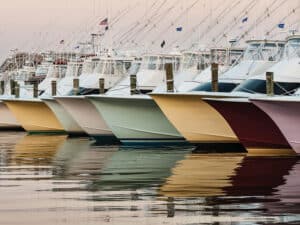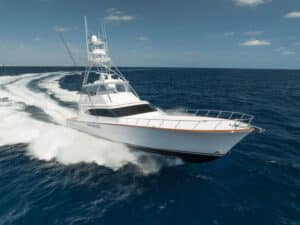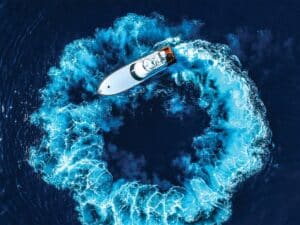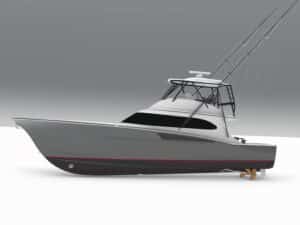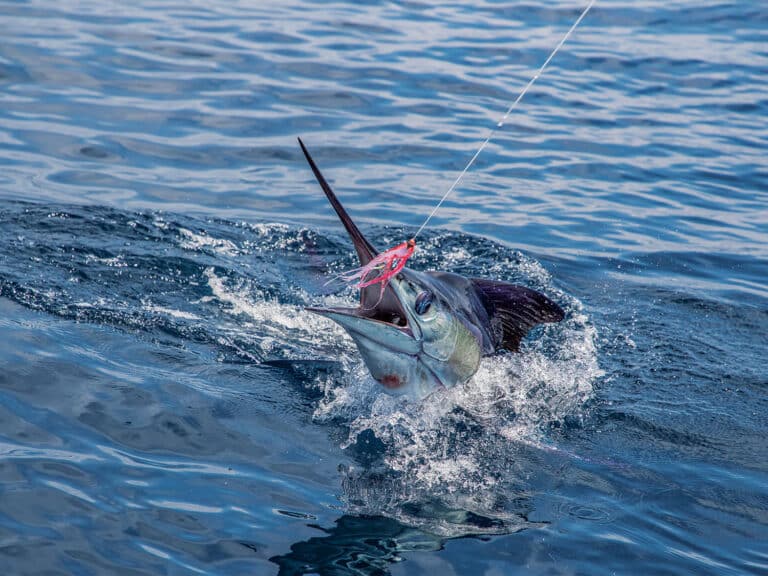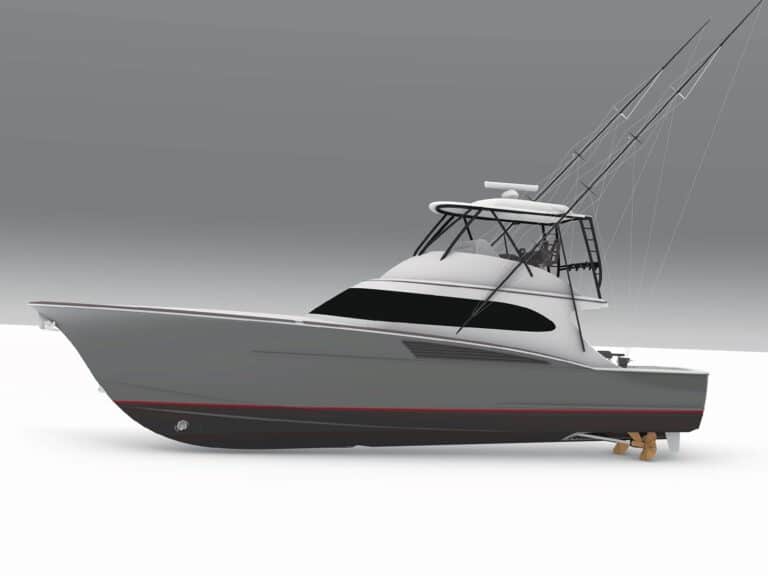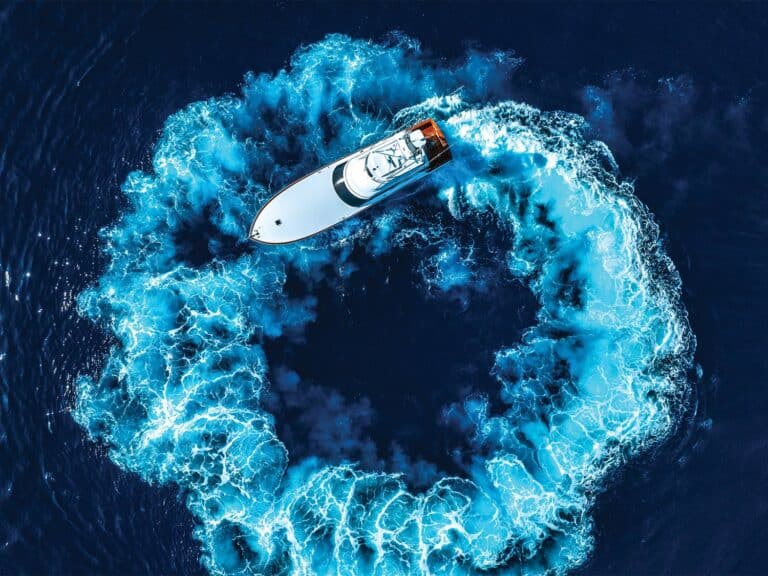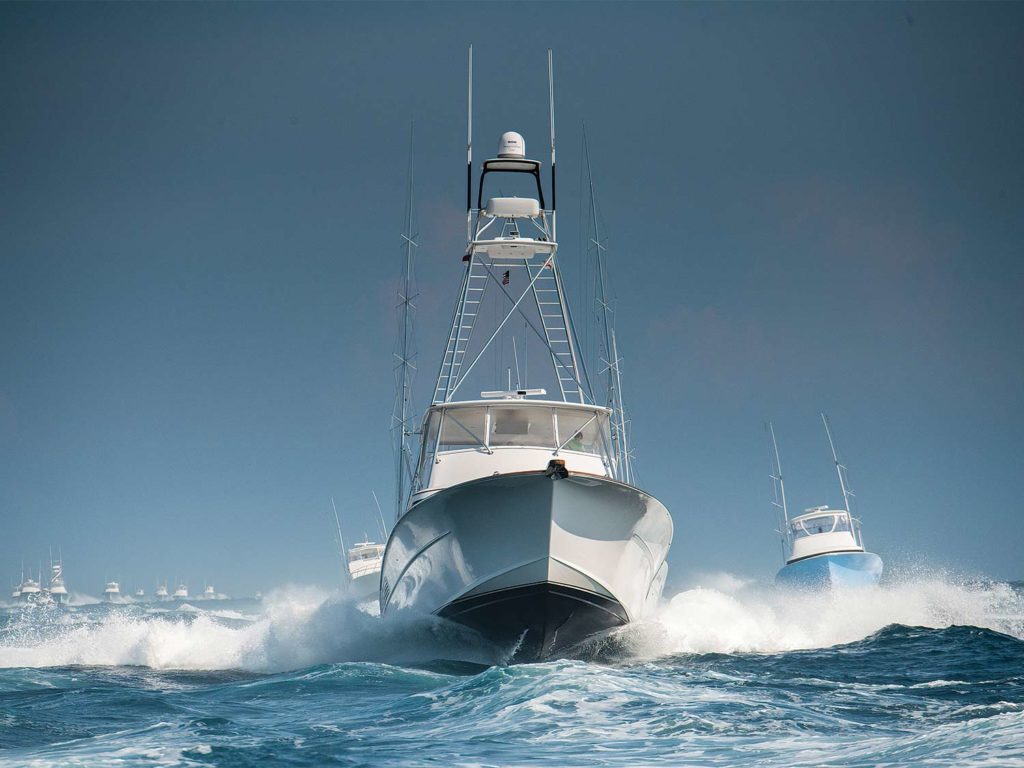
By Julia Milbert, MAN Engines marketing and communications manager, as told to Capt. Jen Copeland
January 1, 2021, is zero hour for all recreational applications, including yachts and sport-fishing vessels if they possess a load-line length of 78.4 feet. According to the US Coast Guard: “A vessel’s load-line length is measured on a particular waterline, determined by its molded hull depth (the vertical dimension from the top of the keel to the underside of the freeboard deck at the vessel’s side). Specifically, it is the waterline located at 85 percent of the least-molded depth of the hull, measured up from the keel. For vessels that have a flat freeboard deck (no sheer) that is parallel to a flat keel, this is a fairly straightforward determination. However, for vessels that have discontinuous or stepped freeboard decks, or a raked keel, and/or deck sheer, determining the least-molded depth is a little more involved.” If this maritime legalese doesn’t get your head spinning, then perhaps the new regulations will. Thank God for naval architects.
The regulation implemented by the International Maritime Organization applies to all international waters, except for the stated Emission Controlled Areas. In the United States, the ECA extends 200 nautical miles from all east and west coasts, and in those areas, an EPA certification is sufficient. For the sport-fishing industry, this means that noncompliant boats could be used within those 200 nautical miles but could not cross over to Bermuda, the Hawaiian Islands or any island in the Caribbean. And any vessels traveling outside the 200 nm ECA would be subject to IMO Tier III regulations.
In order for marine engines to meet the Tier III standards, the most proven solution is to incorporate a selective catalytic reduction system. These systems are attached to the engine, and a 32.5 percent urea solution (most commonly called DEF or AdBlue) is injected into the exhaust flow to reduce the nitrogen oxides (NOx) emitted.
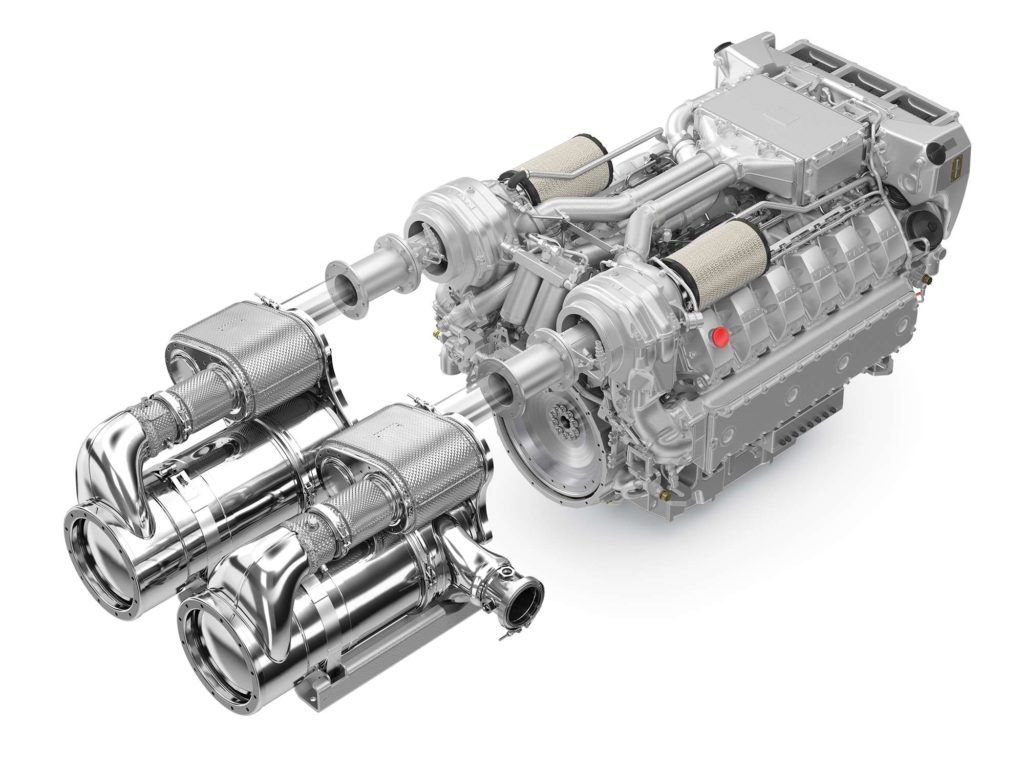
The urea solution reacts with the NOx on the surface of the catalyst and converts it to nitrogen and water, instead of allowing the environmentally unfriendly gas to react with Earth’s atmosphere.
The SCR system—plus the urea-solution tank—obviously requires more engine-room space and will have an influence on the overall weight of the vessel, sparking the discussion: Is it worth it? Space would be compromised, sure, so this could influence the new-build owner to put down his deposit on a boat that would be just a bit smaller than he wanted originally, or to buck up and go larger to accommodate the new regulations. Either way, the owner will need to make compromises in space if he wants to travel outside the Emission Controlled Areas.
Selective catalytic reduction systems that are lightweight, compact and able to be mounted at any angle will be essential when applied to marine engines, and while there are exemptions for replacement engines and repowers, every new build after the January 1 deadline will be subject to the Tier III requirements if the load-line length falls within range. This change is inevitable, and predictions are that we will see boat models either staying below the regulatory LLL or becoming significantly bigger to accommodate the space needed for SCR systems.
On the workboat side, we have already experienced the changes, and it always takes some time for all parties involved to get used to new technology like this. It also should be mentioned that infrastructure for the DEF solution must be in place, even in the most remote places owners like to holiday. There has already been one five-year delay; could this issue cause another? Time is running out.
